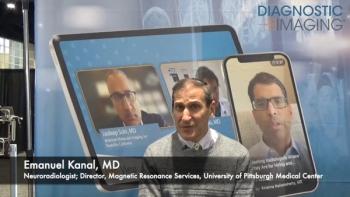
Trends in Breast Imaging Care: Improving Outcomes, Efficiency, and Experience
Hologic’s Jennifer Meade, division president of breast and skeletal care, discusses the focus for breast imaging in the near future and some latest technologies.
Hologic received 510(k) clearance from the U.S. Food & Drug Administration for its Genius AI Detection software this week during the Radiology Society of North America (RSNA) annual meeting. This move is one more development that is feeding growing trends in breast imaging, said Jennifer Meade, division president of breast and skeletal care for women’s imaging vendor Hologic.
Meade spoke with Diagnostic Imaging not only about some of Hologic’s more recent product offerings, but she also discussed feedback from the radiology community and some growing trends in breast imaging. In the coming years, she said, the industry can expect to see a greater focus on improved patient outcomes, workflow efficiency, and patient experience. In addition, she said developments and investments will continue around artificial intelligence, as well as personalized medicine.
With this latest FDA clearance, the Genius AI Detection software is set to follow that path, according to company information. It is designed to optimize workflow in four specific ways – by providing a case score that reflects confidence of malignancy, categorizing cases based on the number of lesions present, flagging the most concerning cases in less than a minute, and providing an estimate of how much time a radiologist can expect the image review to take.
For more RSNA coverage, click
Newsletter
Stay at the forefront of radiology with the Diagnostic Imaging newsletter, delivering the latest news, clinical insights, and imaging advancements for today’s radiologists.




























